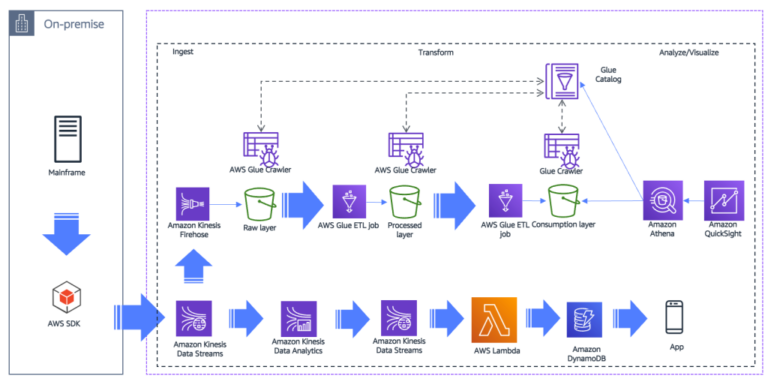Organizations have rapidly come to the realization that digital cloud services make a compelling business case for helping them navigate this difficult pandemic year. The market for cloud services is expected to grow 18% in 2021 and is likely to surpass a staggering $1 trillion by 2024. While benefits of cloud adoption may seem fairly obvious, implementing cloud infrastructure can present some real challenges for businesses.
1. Security
Unlike an organization’s on-prem infrastructure, cloud-based deployments are outside of the physical network perimeter and can be directly accessible via the public internet. Without the right expertise and configuration, this can make it easier for cybercriminals to gain unauthorized access to cloud-based business solutions.

Cloud service providers offer a number of application programming interfaces (APIs) so that customers can get the most out of their cloud investments. If these cloud services are not carefully configured, crafty cybercriminals can exploit these APIs to gain unauthorized access. Gartner estimates that by 2022, API abuses will be the single largest threat vector responsible for data breaches within enterprise web applications.
Cloud services often allow easy sharing of data. So great care should be taken with how things are set up to avoid sharing data with people who shouldn’t have access to that data. Insider threats are also a concern as malicious insiders can potentially provide access to someone not authorized.
2. Lack of expertise
Studies suggest that 86% of organizations are finding it challenging to find employees with the right skill-sets to configure and manage their cloud solutions, which is slowing down cloud projects. Cloud infrastructure is evolving so rapidly with an ever-increasing list of features, capabilities and changes that if employees aren’t keeping up with the latest trends and updates, it can cause massive security issues. Cloud misconfiguration is the number one reason for cloud data breaches world-wide and is also a major compliance risk.
3. Compliance
When businesses hand over data to a cloud provider, they don’t hand over the legal liability or the responsibility for regulatory compliance; that task stays with the company. On the flip side, IT doesn’t always have full control over provision, infrastructure delivery and operation in the cloud-based world; this can raise issues with compliance governance, data quality, and risk management.
Regulations are also tightening their grip on cloud services at the same time as originations are increasingly relying on them. Not only that, regulations are constantly changing and becoming more complex. Every country can potentially have a different regulation and this could lead to several gaps in compliance, especially for those businesses that are handling global customer data or Personally Identifiable Information (PII).
4. Cost
Handling cloud spending is as difficult an issue to deal with as security. Those companies that try to ‘lift and shift’ their environment to the cloud are unlikely to find it cheaper than their on-prem environment. To extract real value from the cloud, companies need to undergo digital transformation by reimagining their functions, applications and services, instead of simply lifting and shifting their datacenter to the cloud.
Organizations are also finding it difficult to cope with the growing creep of cloud spending. Per recent research, almost one-third of cloud spending is getting wasted. As outlined earlier, there is a major drought of cloud talent and this means that finding, hiring and retaining the right person can be time consuming and expensive.
5. Multi-cloud
Almost 93% of companies use multi-cloud environments. This brings up a different set of complications because every cloud has a different mechanism, interface, and complexity. Multi-cloud can be expensive to manage and this may require a lot of different staff with different skills and capabilities. This also expands the threat surface drastically as the number of entry points such as third-party apps and APIs multiply (and because security teams are limited), monitoring the entire infrastructure can be difficult, thereby increasing the chances of security oversight and misconfigurations.
6. Cloud integration and manageability
Most businesses use a combination of on-prem and multi-cloud environments (e.g., security, apps, tools, directory services, etc.). This can be difficult to integrate and manage since every environment will have a different way of monitoring performance. Without the right kind of tools and expertise put together in a centralized control panel, you may find that you don’t have proper visibility and control over how the network, applications and overall environment is performing. And even if you do have visibility, you’ve got it in different control panes of your various cloud providers. This results in organizations having to log into each of their cloud provider’s environments to see how each environment is performing – slowing down the discovery of potential issues.
Despite these challenges, if the cloud is well-implemented and managed, such issues are far from being showstoppers. There are technologies that can help too, such as Citrix cloud services that possess the ability to link into multiple environments and provide a single pane of glass for some aspects of user experience. Tools that can make your workspace intelligent can dramatically simplify accessibility and boost experience for users by providing access to the features rather than the entire app with all the different interfaces and settings.
Finally, with the right mix of vision, tools and expertise, you can confidently build a hybrid cloud environment, one that boosts security, improves manageability and provides a more modern desktop experience to users, unlocking productivity.
By Gary Taylor

Gary Taylor is a workspace offering manager and architect for Capgemini, responsible for developing end user transformation services for the company’s Connected Workspace offerings globally. Capgemini is a global leader in consulting, digital transformation, technology, and engineering services. A multicultural company of 265,000 people in nearly 50 countries, Capgemini’s purpose is to unleash human energy through technology for an inclusive and sustainable future. With Altran, the Group reported 2019 combined global revenues of €17 billion.





